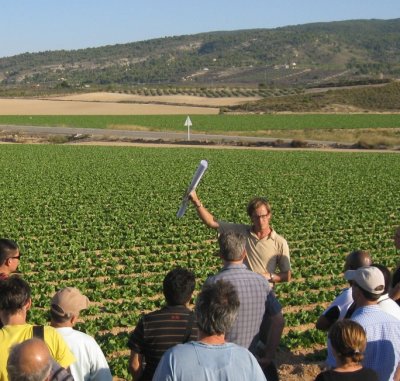|
Manual of communication and dissemination |
 |
|
Guidance for organisation of community work, writing dissemination products, and dissemination activities
Author: Nichola Geeson
 |
The DESIRE project has developed strategies that could remediate land degradation over vast areas, with potentially enormous environmental, social and economic benefits. However this potential can only be realised if these strategies are actually adopted by stakeholders. Stakeholders range from families who depend upon and manage land, to the policy-makers at district, national and international scales who design policies that affect land degradation.
|
Therefore, DESIRE has developed a comprehensive, pragmatic approach that can enable us to communicate our findings effectively to diverse groups of people. The aim of this DESIRE-specific manual was to provide guidance specifically for DESIRE project partners, as a compendium of ideas and guidance. A shorter, generic version of this manual is also available, to offer guidance to researchers outside DESIRE (see »Manual of communication and dissemination (Generic)).
The Manual of communication and dissemination (DESIRE-specific) contains the following sections
| 1. |
Introduction |
|
1.1
1.2
1.3
1.4
|
The audience
Improving communication and understanding
Writing DESIRE dissemination products
Overview of this Manual
|
| 2. |
Preparation for production of dissemination products |
|
2.1
2.2
2.3
2.4
2.5 |
Complexity and formats of dissemination
Key messages and basic products of DESIRE
Identification of the most suitable dissemination products to be used in each Study Site
Matching the complexity of dissemination products to the audience
Writing for different audiences
|
|
|
2.5.1 All audiences
2.5.2 Writing purely for scientists
2.5.3 Writing for educated stakeholders
2.5.4 Writing for less knowledgeable stakeholders and members of the general public
2.5.5 Writing for schoolchildren and their teachers
2.5.6 Writing for administrators and politicians |
| 3. |
Developing and using dissemination products with stakeholders |
|
3.1
3.2
3.3
3.4
3.5
3.6
|
Principles of stakeholder engagement
Keeping stakeholders involved
Developing dissemination products with stakeholders
Preparing the most suitable products for the intended audience
Spreading dissemination products and messages far and wide
Evaluation of dissemination products |
| 4. |
Structure of the Harmonised Information System |
|
4.1
4.2
4.3
4.4
|
Purpose of the HIS
How the HIS was planned
User requirements for the HIS, as suggested by DESIRE partners
New opportunities for dissemination within the HIS |
| 5. |
First ideas for DESIRE dissemination products |
|
5.1
5.2
5.3
5.4
5.5
|
First ideas of Research Theme 1 dissemination products
First ideas and examples of Research Theme 2 dissemination products
First ideas of Research Theme 3 dissemination products for the HIS
First ideas of Research Theme 4 dissemination products for the HIS
First ideas of Research Theme 5 dissemination products for the HIS |
| 6. |
Practical considerations |
|
6.1
6.2
|
Copyright and intellectual property
Cost-effective ways of promoting dissemination |
| 7. |
Sources of dissemination material to use as it is with DESIRE stakeholders, or use for ideas
for new dissemination products |
|
7.1
7.2
7.3
7.4
7.5
|
General
For technicians and farmers
For Policy Makers
For Teachers and others involved in education
For Researchers.... |
| 8. |
Further reading |
|
8.1 |
Communication with stakeholders |
| Appendix 1: |
Stakeholder checklists |
| Appendix 2: |
Examples of dissemination products |
| Appendix 3: |
Writing press releases |
| Appendix 4: |
Writing a policy brief |
| Appendix 5: |
Making video clips and video podcasts |
| Appendix 6: |
Making DESIRE posters, factsheets, booklets, brochures and PowerPoint presentations |
|





